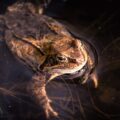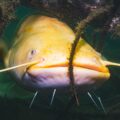Catfish are known for their diverse diet, which mainly consists of smaller fish, aquatic insects, and a variety of bottom-dwelling organisms. Their opportunistic feeding habits often lead them to consume a wide range of organic matter, which is why the question of whether catfish would eat bananas may arise. As omnivorous creatures, catfish have the physiological capability to process both plant and animal materials, which suggests that they might not be averse to a food source such as bananas.

However, it is unusual for catfish to encounter bananas in their natural habitat, as bananas are not indigenous to aquatic environments. While catfish have been observed eating various fruits and vegetables in captivity when offered by their caretakers, this does not necessarily mean that bananas are a natural or beneficial component of their diet. It is important for catfish enthusiasts and pet owners to consider the nutritional needs and natural foraging behaviors of catfish when determining their diet.
Research and observations indicate that providing catfish with a diet that closely mimics their natural food sources is key for their health and well-being. Therefore, while catfish might eat bananas if given the opportunity, particularly in a captive setting, this does not imply that bananas should be a regular part of their dietary plan. Aquatic experts generally recommend a balanced diet that supports the growth and health of catfish, which typically includes high-quality pellets, live or frozen prey, and specific plant materials suitable for their digestive systems.
Exploring the Question
Understanding whether catfish would eat bananas involves examining their natural dietary habits and considering how fruit might fit into their nutritional requirements.
Potential for Fruit in Catfish Diets
Catfish are predominantly known as opportunistic bottom feeders with diets consisting mainly of aquatic organisms. They typically consume invertebrates, such as insects, worms, and larvae, along with fish. In captivity, their diet can be more varied, potentially including pellets, flakes, and some vegetables. While fruits are not a standard component of a catfish’s diet, there is interest in whether they can consume them safely and with any benefit.
Common Misconceptions
A common assumption is that catfish, given their non-picky nature, may readily eat bananas. However, fruit is not part of their natural dietary preferences or nutritional needs. They require a diet high in protein, which bananas do not provide. Moreover, catfish’s digestive systems are not designed to break down the sugars found in fruits. It’s crucial to adhere to foods that match the catfish’s natural dietary needs to maintain their health and well-being.
Basic Understanding of Catfish Diets

The section provides an insight into the typical food items that make up a catfish’s diet and what their bodies require to remain healthy.
Natural Dietary Habits of Catfish
Catfish are known for their diverse and opportunistic feeding behavior. They typically consume a wide variety of food sources found within their natural habitats. These can be broadly categorized into:
- Invertebrates: Worms, crustaceans, and insects.
- Fish: Both live prey and dead matter, depending on availability.
- Plant Material: Algae and small aquatic plants occasionally.
Their diet varies greatly depending on their species, size, habitat, and the resources available to them.
Nutritional Requirements of Catfish
Catfish require a balanced mix of proteins, fats, and carbohydrates to thrive. Essential nutrients vital for their growth and health include:
- Proteins: Critical for growth and repairing body tissue.
- Fats: Provide energy and help in the absorption of vitamins.
- Carbohydrates: Serve mostly as an energy source.
- Vitamins and Minerals: Required for various biological processes and maintaining bodily functions.
Each of these nutritional components plays a crucial role in their overall development and health, influencing their immune systems, growth rates, and reproduction.
Is it Beneficial when Fishing
Using bananas as bait while fishing for catfish may seem unconventional since catfish typically respond to stronger smelling baits. However, some anglers believe that the fruit’s distinct smell and bright color can intrigue catfish and other fish species.
Can it be used with other types of bait
When incorporating bananas into fishing, it is often recommended to combine them with other types of bait. For instance:
- Chicken liver:
- Traditional, strong-scented bait.
- Can be enhanced by banana pieces for added visual appeal.
- Stink baits:
- Known for their pungent smell.
- Banana slices can alter the bait profile, potentially attracting fish that have become wary of standard bait smells.
- Dough baits:
- Homemade or store-bought, these baits can be customized.
- Kneading in mashed bananas provides a distinctive sweetness that could entice catfish.
- Cheese bait:
- Many catfish baits contain cheese for its oily composition and scent.
- Bits of banana mixed with cheese bait might add a unique twist that could intrigue catfish.
It is essential to note that bananas alone are not the norm in catfish angling, and their effectiveness is largely anecdotal. However, when combined with more traditional baits, they might offer an edge by introducing a new stimulus to the fish.
Case Study: Catfish and Bananas
In this section, we explore the interaction between catfish and bananas across different environments and observe their reactions.
Scientific Observations
Researchers have documented that catfish, primarily bottom-dwellers, are opportunistic feeders that typically consume items available in their environment. However, their diet mainly consists of aquatic organisms such as algae, small fish, and invertebrates. Studies on catfish behavior indicate no natural inclination towards consuming bananas or similar fruits, as these are not typical components of their aquatic habitat.
Aquarium and Pond Scenarios
In controlled environments like aquariums and ponds, catfish diets can be more diverse. Owners and caretakers have experimented with various foods, including fruits. Instances of catfish consuming bananas in these scenarios are observed when:
- The fruit is cut into small pieces
- Bananas are introduced sparingly as a supplement to the regular diet
However, these occurrences are rare and not indicative of a natural dietary preference.
Catfish Reaction to Bananas
When bananas are introduced to catfish in captivity, the reaction differs among individual fish. Some may investigate the new food source out of curiosity, while others might ignore it altogether. It’s crucial to note that:
| Catfish Behavior | Bananas as Food |
|---|---|
| Acceptance | Rare and dependent on individual fish |
| Rejection | Common due to unfamiliarity with non-native food items |
In summary, while there are instances where catfish will eat bananas, especially in an aquarium setting, it is not a common practice or preferred dietary component for these aquatic creatures.
Conclusion
Catfish, primarily bottom-feeders, show a diet that is remarkably diverse. They typically consume a range of foods, from aquatic insects to other fish. The inquiry into whether catfish would eat bananas reflects a broader question about their adaptability in terms of diet.
Research indicates that catfish have a tendency to be opportunistic feeders, eating what is available in their environment. This can include plant matter or fruits that fall into the water. However, bananas are not a natural part of their diet.
In captivity, aquarists may observe varied results when offering bananas to catfish. Some catfish might nibble on banana pieces out of curiosity or a lack of other food options. Meanwhile, other factors such as food scarcity or competition might influence a catfish’s willingness to try new foods.
- Nutritional Considerations: Bananas provide certain nutrients but lack the protein-rich profile catfish require.
- Behavioral Observations: Interest in bananas can differ between individual catfish.
In essence, while catfish in the wild are unlikely to encounter bananas, they may experiment with them in artificial settings. It is crucial to remember that keeping a balanced diet, aligned with their natural needs, is important for the health of a catfish. Bananas should not be considered a dietary staple but could serve as an occasional treat in a controlled environment.











